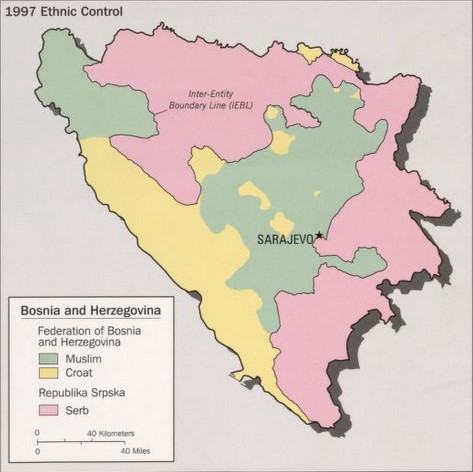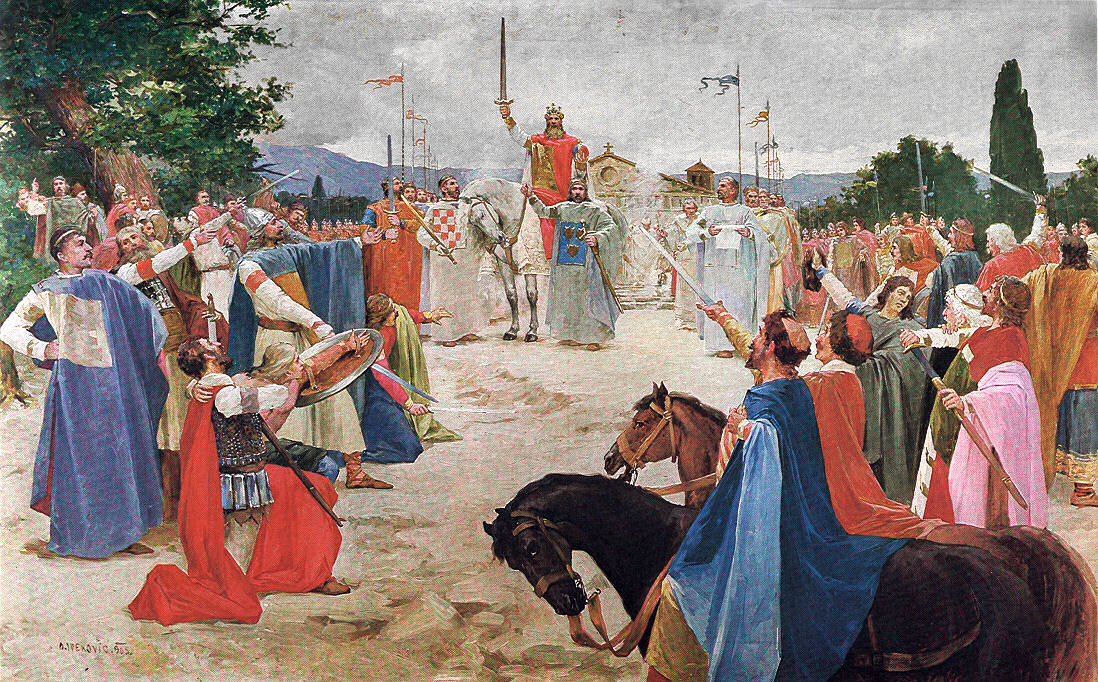|
Donja Mahala
Donja Mahala ( sr-Cyrl, Доња Махала) is a village in the municipality A municipality is usually a single administrative division having corporate status and powers of self-government or jurisdiction as granted by national and regional laws to which it is subordinate. The term ''municipality'' may also mean the go ... of Orašje, Bosnia and Herzegovina. Demographics In the 1991 census it had a population of 4,273. According to the 2013 census, its population was 3,702. References Populated places in Orašje {{PosavinaCanton-geo-stub ... [...More Info...] [...Related Items...] OR: [Wikipedia] [Google] [Baidu] |
Political Divisions Of Bosnia And Herzegovina
The political divisions of Bosnia and Herzegovina were created by the Dayton Agreement. The Agreement divides the country into two federal entities: the Federation of Bosnia and Herzegovina (FBiH) and the Republika Srpska (RS) and one additional entity (condominium) named the Brčko District. The Federation of Bosnia and Herzegovina (FBiH) is composed of mostly Bosniaks and Croats, while the Republika Srpska (RS) is composed of mostly Serbs. Each entity governs roughly one half of the state's territory. The Federation of Bosnia and Herzegovina itself has a federal structure and consists of 10 autonomous cantons. Overview The Federation and the Republika Srpska governments are charged with overseeing internal functions. Each has its own government, flag and coat of arms, president, legislature, police force, customs, and postal system. The police sectors are overseen by the state-level ministry of safety affairs. Since 2005, Bosnia and Herzegovina has one set of A ... [...More Info...] [...Related Items...] OR: [Wikipedia] [Google] [Baidu] |
Federation Of Bosnia And Herzegovina
The Federation of Bosnia and Herzegovina is one of the two entities within the State of Bosnia and Herzegovina, the other being Republika Srpska. The Federation of Bosnia and Herzegovina consists of 10 autonomous cantons with their own governments and legislatures. The Federation was created by the 1994 Washington Agreement, which ended the Croat–Bosniak War within the Bosnian War, and established a constituent assembly that continued its work until October 1996. The Federation has a capital, government, president, parliament, customs and police departments and two postal systems. It occupies about half of the land of Bosnia and Herzegovina. From 1996 until 2005 it had its own army, the Army of the Federation of Bosnia and Herzegovina, later merged in the Armed Forces of Bosnia and Herzegovina. The capital and largest city is Sarajevo with 275,524 inhabitants. History The basis for the creation of the Federation of Bosnia and Herzegovina were laid down by the W ... [...More Info...] [...Related Items...] OR: [Wikipedia] [Google] [Baidu] |
Cantons Of The Federation Of Bosnia And Herzegovina
The ten cantons of the Federation of Bosnia and Herzegovina, one of the two political entities of Bosnia and Herzegovina, are its federal units with a high level of autonomy. The cantons were established by the Law on Federal Units (Cantons) on 12 June 1996 as a result of the Washington Agreement of 1994 between the representatives of the Bosnian Croats and Bosniaks. Five of the cantons have a Bosniak majority: Una-Sana Canton, Tuzla Canton, Zenica-Doboj Canton, Bosnian-Podrinje Canton Goražde and Sarajevo Canton; three have a Croat majority: Posavina Canton, West Herzegovina Canton and Canton 10, and the two cantons are regarded as ethnically mixed: Central Bosnia Canton and Herzegovina-Neretva Canton. The most populous canton is Tuzla Canton, while Canton 10 is the largest by area. Creation The cantons of the Federation of Bosnia and Herzegovina are a result of an artificial application of 1993 Vance–Owen Peace Plan for the war in Bosnia and Herzegovina, app ... [...More Info...] [...Related Items...] OR: [Wikipedia] [Google] [Baidu] |
Posavina Canton
The Posavina Canton ( hr, Županija Posavska; bs, Posavski kanton; sr, Посавски кантон) is one of ten cantons of the Federation of Bosnia and Herzegovina in Bosnia and Herzegovina. It is the smallest canton with an area of only . The canton is an exclave of Federation of Bosnia and Herzegovina, being bordered by Republika Srpska and Brčko District to the south and the river Sava and Croatia to the north. Its capital is Orašje and the largest town is Odžak. History The Posavina area was inhabited since prehistoric times, as evidenced by various archaeological finds of coins and other artifacts. After the 1718 Treaty of Passarowitz between the Ottoman Empire and Habsburg monarchy, mostly Catholic families from mountain villages were displaced across the plains, as the Turks themselves settled in the hills and valleys. The Croats from Županja, Babina Greda and Štitar moved to the villages of Kopanice, Vidovice, Tolisa and Domaljevac. The current munici ... [...More Info...] [...Related Items...] OR: [Wikipedia] [Google] [Baidu] |
Municipalities Of Bosnia And Herzegovina
In Bosnia and Herzegovina, the smallest administrative unit is the municipality ("''opština''/општина" or "''općina''/опћина" in the official languages and scripts of the country). Prior to the 1992–95 Bosnian War there were 109 municipalities in what was then Socialist Republic of Bosnia and Herzegovina. Ten of these formed the area of the capital Sarajevo. After the war, the number of municipalities was increased to 143, grouped in the following way: *79 municipalities constitute the Federation of Bosnia and Herzegovina (FBiH), which comprises 51% of the country's total territory. The municipalities within the federation are grouped into ten cantons. *64 municipalities constitute the Republika Srpska (RS), which comprises 49% of the country's total territory. In addition, Brčko District does not belong to either entity and is governed as a condominium of both FBiH and RS entities. The district corresponds to the pre-war Brčko municipality. Although techn ... [...More Info...] [...Related Items...] OR: [Wikipedia] [Google] [Baidu] |
Orašje
Orašje ( sr-cyrl, Орашје) is a city and the capital of Posavina Canton of the Federation of Bosnia and Herzegovina, an entity of Bosnia and Herzegovina. It is situated in the northern part of Bosnia and Herzegovina, on the banks of river Sava near the border with Croatia. As of 2013, it has a population of 19,861 inhabitants, while city of Orašje has a population of 3,614 inhabitants. Demographics Population Ethnic composition Sports The local football club is HNK Orašje. Notable people * Zdenko Baotić, footballer *Bakir Beširević, former footballer *Ivo Gregurević, actor * Edin Husić, footballer *Miro Klaić, former football player *Mato Neretljak Mato Neretljak (born 3 June 1979) is a Croatian professional football manager and former professional player who played as a defender. He was most recently the manager of Croatian club NK Rudeš. Club career He started his professional career i ..., former footballer * Marko Topić, former footballer * Al ... [...More Info...] [...Related Items...] OR: [Wikipedia] [Google] [Baidu] |
Central European Time
Central European Time (CET) is a standard time which is 1 hour ahead of Coordinated Universal Time (UTC). The time offset from UTC can be written as UTC+01:00. It is used in most parts of Europe and in a few North African countries. CET is also known as Middle European Time (MET, German: MEZ) and by colloquial names such as Amsterdam Time, Berlin Time, Brussels Time, Madrid Time, Paris Time, Rome Time, Warsaw Time or even Romance Standard Time (RST). The 15th meridian east is the central axis for UTC+01:00 in the world system of time zones. As of 2011, all member states of the European Union observe summer time (daylight saving time), from the last Sunday in March to the last Sunday in October. States within the CET area switch to Central European Summer Time (CEST, UTC+02:00) for the summer. In Africa, UTC+01:00 is called West Africa Time (WAT), where it is used by several countries, year round. Algeria, Morocco, and Tunisia also refer to it as ''Central E ... [...More Info...] [...Related Items...] OR: [Wikipedia] [Google] [Baidu] |
Central European Summer Time
Central European Summer Time (CEST), sometimes referred to as Central European Daylight Time (CEDT), is the standard clock time observed during the period of summer daylight-saving in those European countries which observe Central European Time (CET; UTC+01:00) during the other part of the year. It corresponds to UTC+02:00, which makes it the same as Eastern European Time, Central Africa Time, South African Standard Time, Egypt Standard Time and Kaliningrad Time in Russia. Names Other names which have been applied to Central European Summer Time are Middle European Summer Time (MEST), Central European Daylight Saving Time (CEDT), and Bravo Time (after the second letter of the NATO phonetic alphabet). Period of observation Since 1996, European Summer Time has been observed between 01:00 UTC (02:00 CET and 03:00 CEST) on the last Sunday of March, and 01:00 UTC on the last Sunday of October; previously the rules were not uniform across the European Union. There were propo ... [...More Info...] [...Related Items...] OR: [Wikipedia] [Google] [Baidu] |
Croats Of Bosnia And Herzegovina
The Croats of Bosnia and Herzegovina (), often referred to as Bosnian Croats () or Herzegovinian Croats () are the third most populous ethnic group in the country after Bosniaks and Serbs, and are one of the constitutive nations of Bosnia and Herzegovina. Croats of Bosnia and Herzegovina have made significant contributions to the culture of Bosnia and Herzegovina. Most Croats declare themselves Catholics and speakers of Croatian language. From the 15th to the 19th century, Catholics in Ottoman Bosnia and Herzegovina were often persecuted by the Ottoman Empire, causing many of them to flee the area. In the 20th century, political turmoil and poor economic conditions caused more to emigrate. Ethnic cleansing within Bosnia and Herzegovina in the 1990s saw Croats forced to go to different parts of Bosnia and Herzegovina, despite having lived in numerous regions prior to the Bosnian War. The 2013 population census in Bosnia and Herzegovina recorded 544,780 residents registering as o ... [...More Info...] [...Related Items...] OR: [Wikipedia] [Google] [Baidu] |
Bosniaks Of Bosnia And Herzegovina
The Bosniaks ( bs, Bošnjaci, Cyrillic: Бошњаци, ; , ) are a South Slavic ethnic group native to the Southeast European historical region of Bosnia, which is today part of Bosnia and Herzegovina, who share a common Bosnian ancestry, culture, history and language. They primarily live in Bosnia, Serbia, Montenegro, Croatia, Kosovo as well as in Austria, Germany, Turkey and Sweden. They also constitute a significant diaspora with several communities across Europe, the Americas and Oceania. Bosniaks are typically characterized by their historic ties to the Bosnian historical region, adherence to Islam since the 15th and 16th centuries, culture, and the Bosnian language. English speakers frequently refer to Bosniaks as Bosnian MuslimsThis term is considered inaccurate since not all Bosniaks profess Islam or practice the religion. Partly because of this, since the dissolution of Yugoslavia, ''Bosniak'' has replaced ''Muslim'' as an official ethnic term in part to a ... [...More Info...] [...Related Items...] OR: [Wikipedia] [Google] [Baidu] |
Serbs Of Bosnia And Herzegovina
The Serbs of Bosnia and Herzegovina ( sr-Cyrl, Срби у Босни и Херцеговини, Srbi u Bosni i Hercegovini) are one of the three constitutive nations (state-forming nations) of the country, predominantly residing in the political-territorial entity of Republika Srpska. In the other entity, Federation of Bosnia and Herzegovina, Serbs form the majority in Drvar, Glamoč, Bosansko Grahovo and Bosanski Petrovac. They are frequently referred to as Bosnian Serbs ( sr, босански Срби, Bosanski Srbi) in English, regardless of whether they are from Bosnia or Herzegovina. They are also known by regional names such as ''Krajišnici'' ("frontiersmen" of Bosanska Krajina), ''Semberci'' (Semberians), ''Bosanci'' (Bosnians), ''Birčani'' (''Bircians''), Romanijci (''Romanijans''), ''Posavci'' (Posavians), ''Hercegovci'' ( Herzegovinians). Serbs have a long and continuous history of inhabiting the present-day territory of Bosnia and Herzegovina, and a long hi ... [...More Info...] [...Related Items...] OR: [Wikipedia] [Google] [Baidu] |




